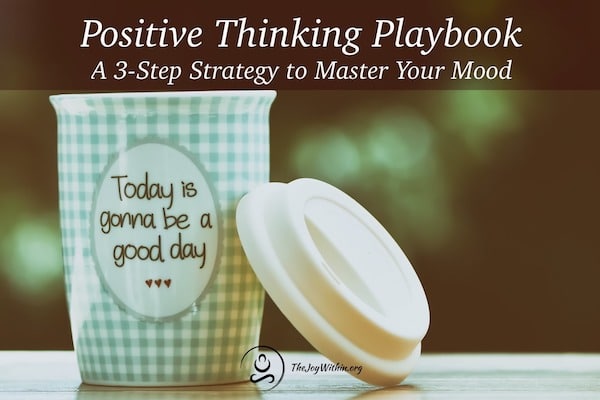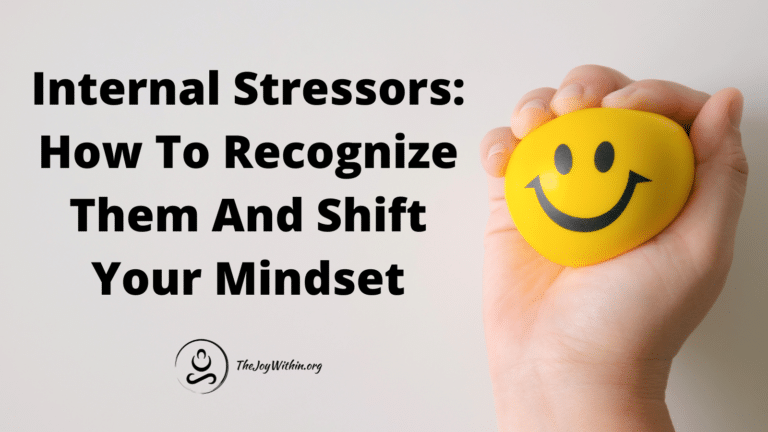Do you struggle to control your thoughts? Do negative thought patterns run wild, without any way to stop them?
If so, you’re not alone. Millions of people struggle to quiet the mind and gain control of their thoughts. Fortunately, there are several proven strategies you can use in order to help stop negative thinking, and begin living a more balanced, empowered life.
In this post we’ll cover a few long term habits and quick fixes you can do in order to stop those out of control thoughts when they arise.
Your Brain Is Malleable: Using Autosuggestion
Before we dive into any specific techniques that can help you to change your thought patterns, I want to give a high level view of the science behind it.
Your brain is malleable, thanks to a concept known as neuroplasticity. (Read this abstract from NIH if you want to learn more.)
This means that although your thoughts can seem to run wild from time to time, they are actually 100% within your control.
Your thoughts run along electrical connections in your brain. Whenever you think a new thought, it creates a new pathway. Whenever you repeat a thought, it strengthens that pathway. Related thoughts form webs, and, eventually, beliefs.
This means that no matter what your current thoughts are, or what negative patterns you’ve developed, you can learn to re-train your brain to think by repeating more positive thoughts to yourself. This process is known as autosuggestion, and while it doesn’t change your thinking overnight, it can have powerful longterm impacts.
Read more about how autosuggestion works in this post.
Develop a Meditation Habit
One of the most powerful ways you can stop negative thought patterns is to develop the habit of quieting your mind through meditation.

At its core, meditation is the act of sitting quietly to focus inward. One of the easiest ways to get started is simply to sit comfortable and begin to draw your attention to your breath, noticing each inhale and exhale.
This technique can have an immediate impact, helping to calm your mind, but its real benefit comes when you develop it as a habit. After a few weeks or a month, you’ll find you’ll begin to feel calmer, and more in control of your thinking, so negative triggers won’t bother you as much.
Read more about how to meditate for the first time, or check out our 30 day Introduction to Meditation.
Learn To Connect Emotions and Thoughts
Another important practice is to begin to develop an awareness of what thoughts trigger different emotions.
When you’re caught up in a spiral of negative thought, it can sometimes feel like every single thought you have is working against you. Even “positive” affirmations can sometimes carry negative overtones, when you’re not in a good state of mind.
If you take a moment to review each thought and decide what emotion it actually makes you feel, you may find you can break the pattern of negativity more easily, because you’ll be able to identify which thoughts cause you to feel bad, and which are innocent casualties of your inner storm.
Stop Negative Thinking Before It Starts
When you identify the thoughts that cause negative patterns, you put yourself in the position to control the cycle of your energy and emotions. With practice, you can even learn how to stop negative thinking before it starts.
Related Post: The Dalai Lama Explains The Origin of Negative Emotions
For example, if you notice that complaining about politicians or greedy corporations always makes you feel bad, you can make an effort to avoid those topics. You can then begin to manage the direction of your thoughts, and keep yourself away from the triggers that cause your mind to run wild.
You could do this by limiting certain topics, but you could also create a connection between your emotion and the types of responses you have in any situation. For example, you might notice you have a tendency to react defensively to other people’s comments, and that your reaction causes you to feel worse. You could then train yourself out of this habit.
While noticing and acting upon these connections can be difficult at first, with practice you may find it’s easier than you think. The trick is to notice the negative triggers before they spiral out of control.
I explain how to get started with this process, along with several strategies you can use, in my Positive Thinking Playbook.
When All Else Fails: Give Up And Do Something Else
If you feel that the above suggestions are too difficult, or you are having a negative breakdown right now, and don’t have time to build up some of these longer term habits, sometimes the best solution is simply to distract yourself.
Do whatever it takes to break the cycle of negativity. I encourage students to create a happy list, with things that you can count on that will always help to lift your mood. Whether that’s reading a book, singing a song, going for a walk, or taking a nap, sometimes your best bet is always to ignore the problem, and approach it with a fresh start later.
If you struggle with negative thinking, I recommend getting started with our Positive Thinking Playbook below, or see this guide to positive thinking techniques, which will walk you step by step through a clear system for improve your negative thoughts, and gaining control of your mind.





